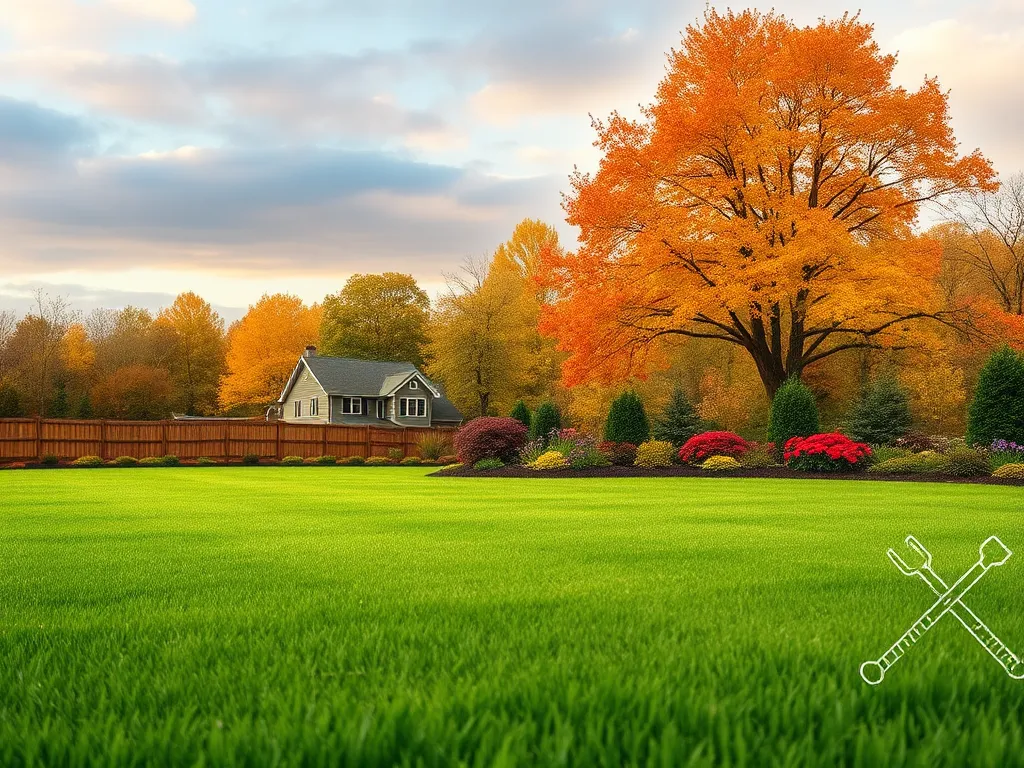Master Adjusting Cutting Height for Seasonal Changes

Adjusting Cutting Height for Seasonal Changes
Adjusting Cutting Height for Seasonal Changes is an essential practice for maintaining a healthy lawn throughout the year. As seasons change, so do the growth patterns and requirements of your grass. Proper cutting height can significantly influence the overall health, appearance, and resilience of your lawn.
Managing summer lawn stress effectively can prevent long-term damage and ensure a vibrant garden.
In the spring, grasses transition from dormancy to active growth. Adjusting your cutting height upward during this time allows the grass to establish deep roots and encourages lush growth. Conversely, in the heat of summer, reducing the cutting height helps the grass cope with heat stress and conserves moisture. Each season demands careful consideration of cutting techniques to ensure optimal grass health.
With fall approaching, it's crucial to prepare your lawn for winter by adjusting cutting heights once again. By slightly raising the cutting height, you allow the grass to store energy in its roots while also minimizing the risk of lawn diseases. Lastly, in winter, grass goes dormant, and minimal cutting is required, but it’s still important to maintain a clean and tidy appearance.
Making timely seasonal mowing adjustments is essential for maintaining the health and appearance of your lawn.
Understanding the dynamics of Adjusting Cutting Height for Seasonal Changes can help homeowners become proactive about their lawn care. Using the right cutting height for each season encourages robust growth, vibrant color, and overall vitality in your landscaping investment. It's an art of balancing turf health with aesthetic appeal that every dedicated lawn owner should master.
In summary, effective lawn maintenance involves frequent evaluation and adjustments based on seasonal changes. Taking the time to implement thoughtful changes to your cutting height will ultimately lead to a thriving, beautiful lawn.
Importance of Cutting Height
The cutting height of grass is crucial for its health and growth. Grass clippings left on the lawn after mowing provide essential nutrients, and maintaining the right height allows the grass to photosynthesize efficiently. Longer grass blades can collect more sunlight, facilitating energy production and promoting stronger growth.
Implementing strategies for winter grass protection can significantly enhance your lawn's resilience when the colder months arrive.
Additionally, a proper cutting height plays a significant role in preventing weed infestations. Taller grass can overshadow and suppress the growth of weeds, reducing the likelihood of competition for nutrients and space in the lawn. By keeping your grass at an optimal height, you can create a natural defense system against unwanted plants.
Moreover, cutting height impacts moisture retention within the soil. Taller grass blades provide shade to the soil, slowing down the evaporation rate. By adjusting the cutting height appropriately, you can help maintain soil moisture levels, which is especially important during hot and dry summer periods.
Best Practices for Seasonal Adjustments
In spring, when grass begins to emerge from dormancy, it is advisable to set your mower cutting height to a taller setting, typically 3 to 4 inches. This allows grass to recover and grow robustly in preparation for the upcoming months. Regularly mowing to this height will ensure that you promote healthy root development.
During the summer, consider lowering your cutting height to around 2.5 to 3 inches for most turf types. This adjustment helps the grass cope with heat stress and minimizes water loss from the soil as taller grasses can lead to increased evaporation. Be cautious not to scalp your lawn; cutting too low can damage the grass and lead to further stress.
As fall approaches, raise the cutting height again to around 3 inches. This strategy supports the grass's preparation for winter and contributes to healthier roots. Preparing your lawn for the colder months is essential to minimize the onset of diseases and maintain a pleasing appearance throughout the season.
Tools for Measuring Cutting Height
Measuring and adjusting your cutting height can vary depending on the type of lawn mower you are using. Rotary mowers often feature adjustable decks where the cutting height can be changed easily, while reel mowers require manual adjustments that can be more complex. Knowing the capabilities of your mower is the first step in effective height management.
Calibrating your cutting tools is essential to ensure accuracy. After each use, check your mower's cutting height settings, and verify them against measuring tools or references. A consistent approach will help maintain the desired height throughout the season.
Using measuring devices can also streamline the process. Simple tools like a ruler can help you gauge grass height more accurately. By checking the height of the grass before and after mowing, you can ensure that your cutting is aligned with the established seasonal adjustment guidelines.
Common Mistakes in Cutting Height Adjustment
One common mistake homeowners make is cutting their grass too low, especially in the spring. Scalping can ruin grass, putting it under unnecessary stress and making it vulnerable to pests and diseases. Maintaining a cutting height of at least 3 inches is a safe practice to avoid damaging your turf.
Another frequent mistake occurs when lawn owners fail to adjust their cutting height based on growth rate. Grass grows at different rates seasonally, so it’s important to monitor your lawn and make timely adjustments rather than sticking to a rigid schedule.
Ignoring seasonal indicators can lead to poor lawn health. For example, if you notice the grass has grown significantly during and after spring rains, it’s crucial to raise the cutting height. Lawn owners should remain observant and ready to adapt their techniques based on environmental cues.
Benefits of Proper Cutting Height
Improving turf quality is one of the most significant benefits of maintaining the correct cutting height. A beautifully manicured lawn not only enhances curb appeal but also creates a healthier ecosystem in your yard, attracting beneficial wildlife and pollinators.
Proper cutting height also enhances drought resistance. Grass that is allowed to grow longer can develop deep roots, allowing it to access moisture below the surface during dry spells. A robust root system is critical to a lawn’s survival during intense heat conditions.
Lastly, adhering to cutting height best practices reduces lawn diseases. Keeping grass at a healthy height promotes airflow and reduces moisture retention on the blades, decreasing the likelihood of fungal infections. This preventive practice is essential for a vibrant, disease-free lawn.
